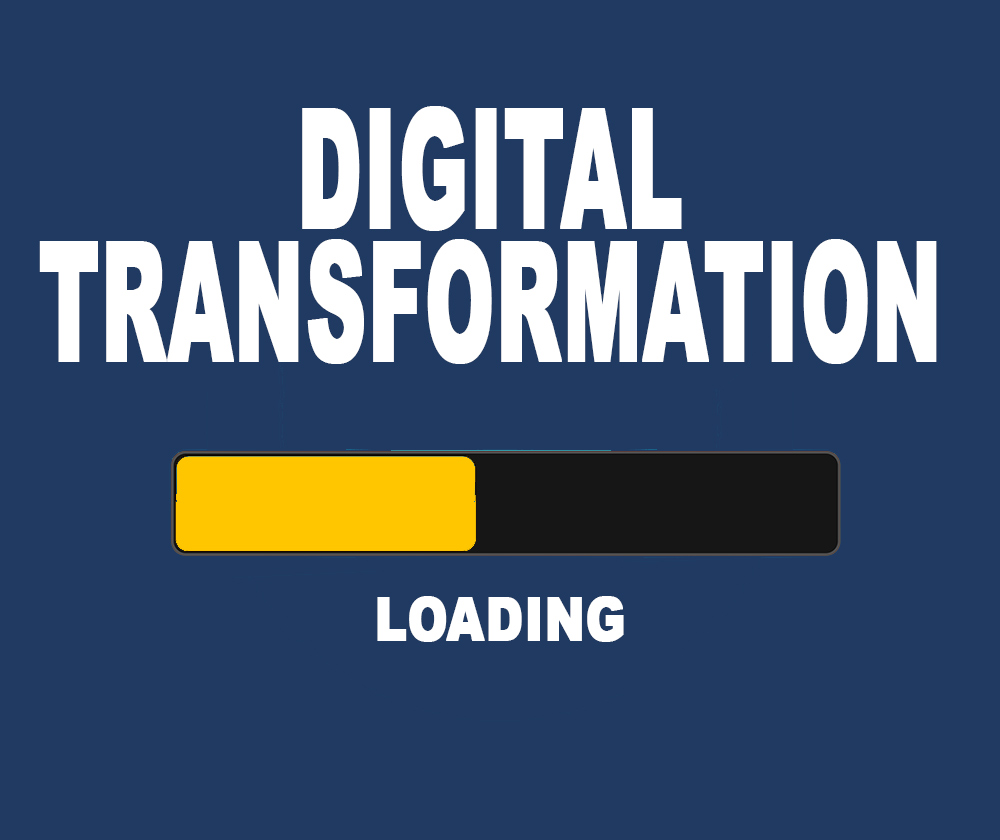Digitization is changing everything from the way we consume products and services to the way businesses themselves deliver value to their customers.
Even a couple of decades ago, most business processes, from sales to delivery, still occurred in the real world or through analog means of communication.
Fast forward twenty years to today, and the complete opposite is true. Business interactions utilizing new technologies are taking place through digital means of communication and are now the new norm.
Digital transformation today
According to the International Data Corporation (IDC), worldwide spending on digital transformation is set to reach $2.3 trillion in 2023. This ongoing, rapid shift towards digitization of every aspect of a business value pipeline forms the essence of digital transformation today.
According to George Westerman, MIT principal research scientist and author of Leading Digital: Turning Technology Into Business Transformation, real digital transformation should lead to a radical rethinking of how organizations use and apply technology with their people and processes.
It’s necessary — but it’s not about technology?
But this ongoing digital transformation is more than just the adoption of new technologies, such as the cloud, real-time analytics, and sales automation processes.
Real digital transformation is more than a simple drive towards modernization or automation of crucial tasks.
Instead, real digital transformation is the massive disruption and realignment of old, established business processes that create new avenues of innovation. In other words, it isn’t just about replacing old pipelines with new ones; it’s about reinventing the entire end-to-end pipeline process.
New types of creativity and innovation
One great example of the digital transformation process in action is the adoption of cloud computing. Not only has cloud technologies reinvented the way we work, but it has also allowed companies to innovate new and creative products, such as Spotify, Netflix, and Hulu. Still, it has also allowed businesses to pioneer new and innovative ways to deliver those products through real-time streaming.
Businesses that have undergone total digital transformation, such as Netflix, are thriving. No one even remembers the days when Netflix used to deliver physical DVDs through the postal service. Meanwhile, businesses that have been slow to adopt or have only pursued limited digitization to support traditional methods, products, and services have struggled.
5 Digital Transformation Drivers
What makes this total reinvention possible?
The short answer is the internet.
However, a more in-depth answer is needed to truly understand the multifactorial nature of today’s ongoing drive towards digital transformation.
Key technological developments that have made genuine digital transformation possible include:
1. Cloud services

The cloud can often be ill-defined and confusing. In general terms, the cloud is simply the internet.
With today’s internet speed and connectivity technology, many tools, products, and services can be pushed to customers via the web. Just look at how social media platforms, online streaming services, and cloud-based enterprise tools have transformed how we work and play.
The cloud can change the way you do business. Running your business with cloud-based software and services is full of benefits that extend beyond the cost of savings and the reduction of onsite hardware.
The truth is the cloud will make a major impact on the day-to-day operations of a business.
2. Automation

One key aspect of digital transformation is the automation of previously labor-intensive, analog tasks.
While most people think of high-tech manufacturing facilities filled with robotic arms, most of the impactful forms of transformative automation are occurring in offices. Just look at how essential productivity and business tools such as Microsoft Excel and Salesforce have changed the way we work.
3. Real-time responsiveness

High-speed internet and the impending arrival of 5G networks have made it possible for companies to respond to shifting business needs and consumer demands in real-time.
For example, customer service representatives can now respond to customer complaints in real-time. They are no more waiting in line for a representative on the phone or in person. Today, real-time, automated chatbots leveraging a rich trove of big data and computing power can often solve many low-level customer service needs with ease and predictability.
4. Instant digital scalability

The scalability of analog processes has historically been a difficult hurdle for companies to overcome. Physical equipment, office space, and labor can’t easily be reduced or scaled up as needed. As a result, companies often had to put up with immense waste in the form of excess capacity, redundant infrastructure, or too much overhead.
Today, however, cloud-based delivery methods can introduce a level of scalability never before seen in human history. In the past, for example, if more computing power was needed during peak working hours, companies had to make capital expenditure and purchase more computing power to fulfill their maximum needs. However, during off-peak hours or times when that computing power was not needed, expensive equipment would sit idle and unused.
Today, with instant digital scalability, many products and services, including computing power, can be pushed to customers on an as-needed basis. That means when more services are needed, and more services are delivered. When those services are no longer required, they are no longer provided. There no waste and consumers and companies alike can scale up or scale down their consumption of services as needed at the time.
5. Big data

The scalability of analog processes has historically been a difficult hurdle for companies to overcome. Physical equipment, office space, and labor can’t easily be reduced or scaled up as needed. As a result, companies often had to put up with immense waste in the form of excess capacity, redundant infrastructure, or too much overhead.
Today, however, cloud-based delivery methods can introduce a level of scalability never before seen in human history. In the past, for example, if more computing power was needed during peak working hours, companies had to make capital expenditure and purchase more computing power to fulfill their maximum needs. However, during off-peak hours or times when that computing power was not needed, expensive equipment would sit idle and unused.
Today, with instant digital scalability, many products and services, including computing power, can be pushed to customers on an as-needed basis. That means when more services are needed, and more services are delivered. When those services are no longer required, they are no longer provided. There no waste and consumers and companies alike can scale up or scale down their consumption of services as needed at the time.
Effective Digital Transformation
Digital transformation is a multifactorial process that touches upon every aspect of a company’s business pipeline, from lead generation to customer service and beyond.
Focusing on only one or a few of these critical drivers does not necessarily lead to a genuine digital transformation that produces better business results. That’s why a holistic, comprehensive digital transformation strategy is essential to succeed. In other words, real digital transformation is more than the sum of its parts.
6 Ideas to Jumpstart Your Business’s Digital Transformation
A successful digital transformation begins and ends with strategy.
Rather than merely making incremental improvements to existing business pipelines (i.e., upgrading equipment, etc.), it is essential to take the digital transformation driving factors we listed above and apply them to each segment of your business pipeline.
1. Start with business goals

There can be no transformation without building the fundamental business case for enacting a digital transformation strategy.
Many digital transformation strategies get bogged down in insignificant details, like which version of particular software to acquire, and miss the bigger picture. Ultimately, applying drivers of digital transformation to your business pipeline must align with your business vision, or else your digital transformation project could quickly become a digital nightmare.
2. Embed new processes from the top down

Digital transformation requires making changes to every part of a business pipeline. However, sweeping changes often encounter consistent pushback from within a business, such as employees and middle managers, and from without, from vendors, suppliers, or even customers.
For a complete digital transformation to take place, the entire enterprise must be aligned behind a unified goal and vision. This is set by the CEO, CIO, and other decisionmakers. They must lead, using a top-down approach, that new tools are utilized and leveraged as much as possible despite initial resistance. They must create the culture for the entire company.
3. Empower employees from below

However, digital transformation cannot happen through a top-down approach alone. After all, it’s the workers in the trenches producing actual value who know most keenly which tools are best suited for which occasion. Workers themselves are often the first to discover a time-saving or labor-saving tool or process.
Companies must implement a system for employees to identify and recommend new tools and processes for consideration in any broader digital transformation strategy.
4. Reskill and upskill employees — often

Technology is continually changing. The pace of change is so fast that many companies are finding that their IT solutions are becoming obsolete in weeks and months rather than years and decades.
Naturally, to leverage new and cutting edge technologies effectively, employees need to understand how those new tools work. Constant training is necessary to push any digital transformation strategy forward. For some, that may mean utilizing a Managed IT Service to run regular, mandatory training sessions or designate a knowledgeable staff member to act as a point person and help roll out new tools.
Since the tools are continually evolving, it is critical to reskill and upskill employees on the regular.
Rigid two to three-year rollouts don’t work anymore in an environment when new tools and more efficient ways of working seem to be bubbling up every day.
Set up an accessible requisition system that allows all employees to submit requests for new technology, which can then be reviewed by IT leadership.
5. Set up information technology innovation labs

A great way to empower an organization’s employees and grassroots workers to participate in digital transformation is to institutionalize their role in innovation. That’s where so-called “innovation labs” come into play.
Too often, organizations lean heavily on top-down decision making and neglect the flow of information from the bottom-up. This can put leadership dangerously out of touch and make blind them to market shifts.
IT innovation labs allow regular staff to test and experiment with new ways of working and new tools. Successful methodologies can then be identified and exported to other parts of the organization. This keeps the company agile and ready for whatever new technologies and new challenges may come their way.
6. Invest in Managed IT Services

The role and scope of IT are constantly changing and rapidly growing. Many businesses do not have the luxury of a fully-staffed IT department capable of managing the many day-to-day tasks necessary to keep a business running. This is especially true for companies looking to undergo a digital transformation.
Instead of hiring expensive in-house staff, many businesses turn instead of third-party IT experts and consultants. They have the knowledge and know-how to design and execute an effective transformation strategy. Managed IT Services help companies make the transition to digital while avoiding many of the potential pitfalls.

